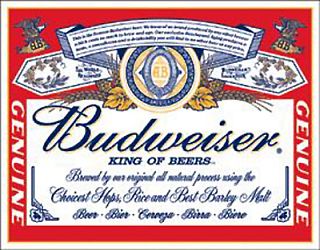As we enter 2011, I am hopeful for a healthy, happy and prosperous year ahead. At my most idealistic, I’m also hopeful that we can find a little more balance and civility as an industry.
The world was shocked by the January 8, 2011 shooting of U.S. Congresswoman Gabrielle Giffords and many others in Arizona. And while the exact motive may never be known, the event has sparked a global debate about words triggering violence. As government officials scramble to take down inflammatory imagery on their web sites and tone down their rhetoric, maybe we, as an industry, can learn something from this tragic event.
I’m guilty of it. Let’s face it, sensationalism gets attention. Making people fearful and spewing negative comments incites action and fuels debate. But have we gone too far as an industry? I look at industry blogs and I see a lot of uninformed criticism out there—a lot more criticism than compliment. Everyone, and I mean everyone is a critic, although a disturbing number of critics online don’t seem to have the courage to share their real identities. Change a brand too much and the public hates you for throwing away the heritage, too little and the design world deems you boring and safe. And in theory, this thinking is correct, but the window of “acceptable change” seems to be getting smaller and smaller by the day.
I’d like to encourage us all to take a moment before throwing out that juicy comment or critique this year and consider the realities of what your colleagues might be working with. We all have clients with specific needs and concerns. There are realities to each client and brand that we work with as designers. You may not like the end result as a designer, and you have a right to that opinion, but it doesn’t mean the work is wrong or off target.
While there has been a pretty strong industry consensus about brand missteps like Tropicana (I know, will we ever stop talking about it), but more recently The Gap, and even Starbucks has had its fair share of critics. Where I find criticism getting out of hand however is with the many brand evolutions out there. From the ferocity of many ‘constructive’ comments I see, you’d think every job was a blank canvas. In actuality, the gatekeepers we must satisfy is an ever growing list, starting with design managers and ending with the CMO or CEO in many cases, with brand managers and marketing teams to satisfy along the way.
I would argue that the quality and talent of a design firm is revealed, not by their “Method-esque” designs, but by the small humble redesigns. The ones that we all scratch our heads at, thinking, “how are we going to fix THAT? They won’t let us DO anything.” It’s easy to make something gorgeous when you have free rein and a single level of approval. But how do you create inspired design when you only have license to take a baby step? This is where our industry’s true talent shines.
As a seasoned designer who tempers idealism with reality, I’ve realized that these challenging projects are often the ones I am most proud of. These redesigns allow us to really examine each detail of a package and lovingly reconstruct the brand, hand picking typography, illustration, color palette. They are changes that the average person may barely notice as separate elements, but when assembled magically evolve a brand, creating happy consumers and successful business.
Case in point, one of the holy grails of brands, Budweiser. If you look back to the beer’s origins from 1870, there is still a heavy influence on who the brand is today. What’s really interesting about Budweiser for a designer is the essence of this brand. It’s as relevant today as it was 140 years ago. And while Budweiser has constantly evolved, rarely has it taken a misstep, and it has always retained a very strong connection to the brand’s DNA.
In the end, there is nothing funky or cool about most of these projects. Instead, they often bring to mind words like respectful…proud…control. When you think about it, a brand is very much like a person. People don’t change overnight, and neither should a brand. They grow, evolve, and sometimes reinvent. They wear different clothes at different times in their lives – feel more confident at times, more reserved at others but at all times must remain believable. And while critics might scream and yell that this work isn’t creative enough, the reality is brand evolutions are the backbone of our industry.
Now, for those of you who know me, you might be thinking I’ve gone all warm and fuzzy. Not true, I still tell it like it is, but I do stop to consider that I may not be privy to all the information, restrictions, and considerations that my fellow designers are working with. There are loads of amazing, talented designers out there, and plenty of work to go around. Let’s tone down the ego in 2011, temper opinions with some civility, and give credit where credit is due. There’s a reason after all that The Golden Rule has been around for more than 2,000 years.
The Author is a shrink label and shrink wrap sleeves designer located in Washingon State.


No comments:
Post a Comment